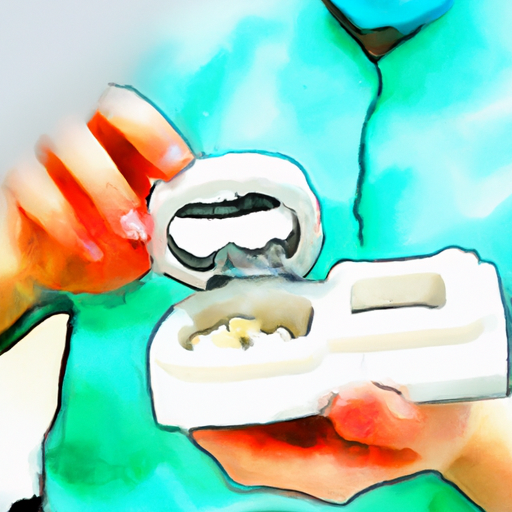Infection safety is of utmost importance in any healthcare setting, and dentistry is no exception. With the close proximity of dental procedures to the oral cavity, the risk of infections is heightened. Therefore, it is crucial for dental professionals to have a comprehensive understanding of infection safety, including its diagnosis, treatment, symptoms, and causes. In this article, we will provide an overview of infection safety in dentistry, exploring the various aspects of this topic. We will discuss the importance of accurate diagnosis and effective treatment, as well as the causes and prevention of infections in dentistry. Additionally, we will delve into the critical role of sterilization and hygiene practices in ensuring infection safety, offering dental professionals best practices to safeguard patient health. By equipping ourselves with this knowledge, we can enhance infection control measures and provide the highest quality care to our patients.
1. "Understanding Infection Safety in Dentistry: An Overview of Diagnosis, Treatment, and Symptoms"
Infection safety is a paramount concern in any healthcare setting, and dentistry is no exception. As oral health professionals, dentists and their staff must adhere to strict protocols to prevent the transmission of infections between patients and ensure a safe environment for all. This article aims to provide an overview of infection safety in dentistry, focusing on the aspects of diagnosis, treatment, and symptoms.
Diagnosis of dental infections involves a careful examination of the patient's medical history, symptoms, and clinical presentation. Dentists rely on their expertise and various diagnostic tools to accurately identify infections. X-rays, intraoral cameras, and laboratory tests are commonly employed to aid in the diagnosis process. These tests help dentists visualize any abnormalities, assess the extent of the infection, and determine the appropriate course of treatment.
Treatment of dental infections depends on the severity and location of the infection. In some cases, a simple prescription of antibiotics may be sufficient to eliminate the infection. However, more complex infections may require surgical intervention, such as an extraction or root canal therapy. Dentists perform these procedures using strict infection control measures, including the use of sterile instruments and proper disinfection protocols.
Symptoms of dental infections can vary depending on the type and stage of the infection. Common symptoms include toothache, swelling, redness, or pus in the affected area, sensitivity to hot or cold, and bad breath. Patients experiencing any of these symptoms should seek prompt dental care to prevent the infection from spreading and causing further complications.
Various factors can contribute to the development of dental infections. Poor oral hygiene is a leading cause, as it allows
2. "Causes and Prevention of Infections in Dentistry: Safeguarding Patient Health"
In the field of dentistry, infection safety is of utmost importance to ensure the overall well-being of patients. Dental procedures, while necessary for maintaining oral health, can potentially expose individuals to various types of infections. It is crucial for dental professionals to understand the causes of these infections and implement effective preventive measures to safeguard patient health.
There are several causes that can contribute to the development of infections in dentistry. One of the primary reasons is the presence of harmful bacteria in the oral cavity. The mouth is home to numerous microorganisms, both beneficial and harmful. However, poor oral hygiene practices can disrupt the balance and allow pathogenic bacteria to thrive, leading to infections. Additionally, dental procedures that involve the manipulation of tissues or the use of invasive instruments can introduce bacteria into the bloodstream, potentially causing systemic infections.
Another contributing factor to infections in dentistry is the improper sterilization of dental instruments and equipment. Dental offices must adhere to strict sterilization protocols to eliminate any potential pathogens. Failure to do so can result in the transmission of infections from one patient to another. Cross-contamination can also occur if proper infection control measures, such as the use of disposable materials or disinfection of surfaces, are not followed diligently.
Prevention is key when it comes to ensuring infection safety in dentistry. Dental professionals must prioritize the implementation of appropriate infection control practices. This includes regular and thorough hand hygiene, using personal protective equipment such as gloves, masks, and protective eyewear, and adhering to sterilization guidelines for instruments and equipment. Disposable materials should be used whenever possible to minimize the risk of cross-contamination
3. "The Role of Sterilization and Hygiene Practices in Ensuring Infection Safety: Best Practices for Dental Professionals"
In the realm of dentistry, infection safety is of paramount importance. Dental professionals have a responsibility to ensure that their patients are protected from the risks associated with infections. One crucial aspect of infection safety in dentistry is the implementation of effective sterilization and hygiene practices.
Sterilization is the process of eliminating or destroying all forms of microbial life, including bacteria, viruses, and fungi. In dental settings, sterilization is essential to prevent the transmission of infectious diseases. Dental instruments and equipment, such as drills, scalers, and mirrors, must be thoroughly sterilized before each use to avoid cross-contamination between patients.
To achieve proper sterilization, dental professionals should follow strict guidelines and best practices. The first step is to clean the instruments and equipment thoroughly using an appropriate detergent or enzymatic cleaner. This helps remove any debris or organic matter that may interfere with the sterilization process.
After cleaning, the instruments should be packaged in sterilization pouches or wraps. These pouches protect the instruments from contamination during storage and transportation. They also indicate whether the sterilization process has been successful, as they typically have color-changing indicators that show when the sterilization conditions have been met.
The most commonly used method for sterilizing dental instruments is autoclaving. Autoclaves use steam under high pressure to kill microorganisms effectively. Dental professionals must ensure that the autoclave is functioning correctly, calibrated regularly, and that the appropriate sterilization parameters are set for each load.
Apart from sterilization, maintaining a high level of hygiene in the dental practice is crucial. Dental professionals should adhere to strict hand

